When to Weed and Feed Your Lawn
What is Weed and Feed?
Weed and feed are not particular product brands; many types of weed and feed products exist. It is a fertilizer and a herbicide mixed together in one package that can be applied to a lawn to serve both purposes.
The wonderful thing about applying Weed and Feed fertilizer is that It fertilizes the lawn and kills and controls the emergence of weeds simultaneously. Instead of setting aside time for each job, you can do it all in one treatment. My recommended Weed and feed mixture is Scotts turf builder.
Why do I need it?
Your lawn needs to have the right food to be healthy. Unless you are blessed with fantastic soil that gives the grass all the nutrients it needs, you will need to apply some sort of lawn fertilizer to keep your lawn in peak condition with lush green grass.
Not only do you need to keep the grass in good condition, you need to keep the weed under control; that is where the weed killer comes in. You can use a weed and feed product to do this job.
Understanding Your Lawn’s Needs
Before you start applying any kind of treatment of lawn weeds or fertilizer, you must first understand what kind of lawn you have. A map is no help if you don’t know where you currently are.
Knowing the type of grass in your lawn
First, you must identify your grass, as they all have different nutritional requirements and herbicide tolerance levels. There are a couple of ways you can do this. You could take a sample of your grass to a local nursery or lawn supplier for help with identification.
You could use a free app if you want to identify your lawn quickly without making a hole in it or traveling. PlantNet is one of the better plant apps around. You could try that first.
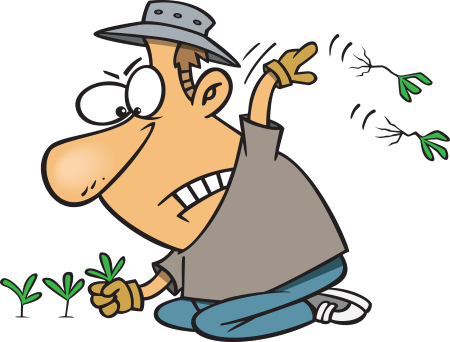
Identifying common weeds in your area
Now that you have identified your grass, you need to step over to the dark side and identify the weeds as well. Dandelions and broadleaf are a couple of the more common ones. You can use the app for that, too. It doesn’t stop there once you have familiarized yourself with the types of weeds you will be dealing with.
You need to drill down a little bit more. If you can understand these weeds’ growth habits and lifecycle, you will be better positioned to work out an effective weed control plan.
Understanding the proper timing for application
Timing is one of the most critical things to get right. Every year, I get approached by people who want prickles treated because they have just noticed them. By then, it’s too late. Timing is everything.
Factors to Consider
The two main things to consider when you use weed and feed are the climate and the soil condition.
Climate and weather conditions
The weather and climate will influence the timing of any weed and feed fertilizer application. When planning your application, you must consider factors such as temperature, snow, or humidity.
Soil type and pH levels
What kind of soil do you have? Is it sandy, clay, or loamy? This will affect the soil’s water retention and nutrient-holding capacities. Conducting a soil test to determine the pH levels before applying weed and feed fertilizer is a good idea—many grasses like slightly acidic soil with a pH of between 6.0 and 7.0.
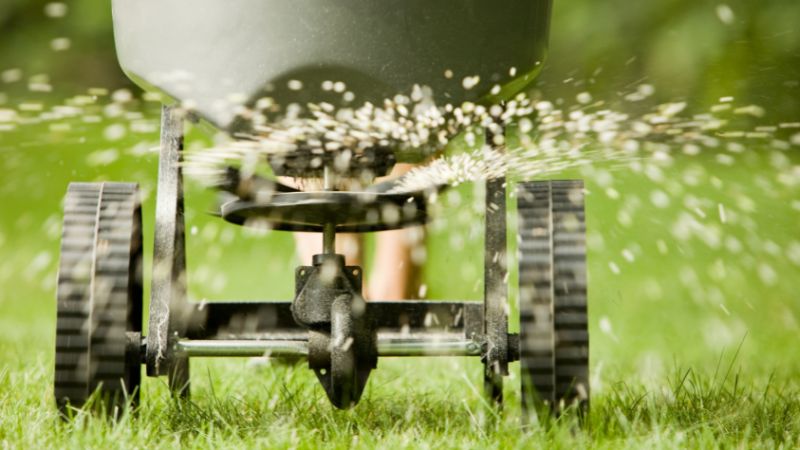
The Best Time to Apply Weed and Feed Fertilizer
The best time to apply “weed and feed” is when both the lawn and weeds are actively growing. This will, of course, depend on your location, climate, and growing season. I have broken it down into warm and cool-season grasses in the schedule below.
Main warm season grasses
Bermuda Grass (Cynodon dactylon): Bermuda grass is a type of warm-season grass known for its resilience in weather and ability to withstand spells and lush growth. It is commonly planted in yards, sports fields, and golf courses.
Zoysia Grass (Zoysia spp.): Zoysia grass is another warm-season grass appreciated for its growth, dense appearance, and ability to flourish in climates and high-traffic areas. It is a choice for lawns, golf courses, and commercial landscapes.
St. Augustine Grass (Stenotaphrum secundatum): St. Augustine grass is a warm-season variety highly valued for its tolerance to shade and deep green hue. It can often be seen in regions with milder winters.
Centipede Grass (Eremochloa ophiuroides): Centipede grass is a low-maintenance warm-season grass known for its growth rate, need for fertilizers, and suitability for acidic soils. It is favored for lawns in areas with soil conditions.
Bahia Grass (Paspalum notatum): Bahia grass stands out as a warm-season option appreciated for its ability to withstand droughts and thrive in soil conditions. It is commonly used in pastures along roadsides and for erosion control purposes.
Lawnmowing101 Membership

Build a six-figure lawn care business
Lawn Care Software

Get Your Lawn Care Business Running Smoothly
Easier for you and your customers. Jobber helps you quote, schedule, invoice, and get paid—all in one place.
Late spring to early summer is ideal for warm-season grasses.
When the warm-season grasses come out to dormancy and start to green up, it is time to apply weed and feed fertilizer. At this time of year, you normally look at a soil temperature of around 60°F (15.5°C) or higher. This is the perfect time of year to feed your lawn for a thicker, healthier turf.
Every product is different, so always pay attention to the manufacturer’s instructions regarding the weed and feed application rates and timing.

Main cool season grasses
Kentucky Bluegrass (Poa pratensis): Kentucky bluegrass is popular among cool-season grasses. Not only does it have a nice texture, but it also grows in a thick growth pattern with a vibrant green color. You will find it in lawns, parks, and sports fields.
Fescue (Festuca spp.): Fescue grass encompasses species like fescue, fine fescue, and creeping fescue. These grasses are appreciated for their ability to thrive in shade, withstand drought conditions, and adapt well to soil types. They are frequently used in lawns, golf courses, and erosion prevention efforts.
Ryegrass (Lolium spp.): Ryegrass can germinate quickly so you can establish this cool-season lawn without too much fuss. It is a lush lawn type that is often used to oversee warm-season lawns to thicken up the turf and give the lawn a bit of winter color. Ryegrass has two main types: a perennial and an annual variety.
Bentgrass (Agrostis spp.): Bentgrass grows in a dense, carpet-like way and will handle a low cut better than most grasses when you mow your lawn. It is a fine-textured grass, so as well as lawns, you will find it on golf courses, putting greens and fairways.
Bluegrass (Poa spp.): Bluegrass encompasses species like bluegrass and Canada bluegrass.
These types of grass are appreciated for their ability to withstand temperatures and create lush turf. They are frequently chosen for lawns, parks, and sports fields in regions with weather.
Early spring and fall are ideal for cool-season grasses.
Spring Application
Spring is when most cool-season grasses come out of their winter dormancy. You want to apply weed and feed early to get the grass off to a good start and function as a pre-emergent treatment for the weeds. Applying weed and feeding in spring suppresses early weed growth and provides essential nutrients for the grass.
Fall Application
Early fall is another good time for application. The grass is still actively growing, and this is a great time to add feed to your lawn because the cooler temperatures help the grass absorb the fertilizer more effectively. This will also help strengthen the roots. Healthy roots will help the grass get through the winter and green up in the early spring. At the same time, the herbicide will knock out the late-season weeds.
Avoid Extreme Temperatures:
If you are experiencing extreme temperatures, it’s best to wait. High temperatures could increase the risk of fertilizer burn, and low temperatures will affect the absorption rates, therefore reducing the effectiveness of the feed or fertilizer.
You are looking for moderate temperatures and adequate moisture in the soil for the best results. Finally, watch the weather; you want a few days of dry weather, as rain can wash away the treatment.

How to Use Weed and Feed;
Get your lawn ready for treatment.
First, give your lawn a mow: You want to mow the lawn at the best height for your grass type. The objective is to allow better contact between the granule and the soil.
Clean the rubbish off your lawn: Walk around the area that you will cover, which is clean of rocks, sticks, leaves, etc. You do not want anything stopping the application of weed and feed from coming into contact with the soil.
Ensure the soil is moist: Water the lawn a day or two before the application. The product works better when applied to a moist surface as it sticks to the grass and soil, improving absorption.
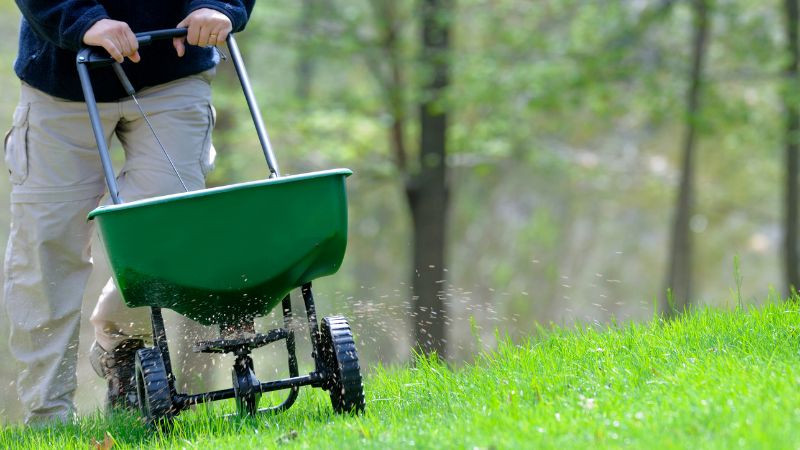
Equipment needed.
Spreader: When applying the product, one of the most important things is to spread it evenly across the lawn. A spreader will help you do that. Make sure you check the label and set the appropriate setting on the spreader based on your lawn size and the amount of weed and feed you want.
Protective Gear: Try not to have any of your skin showing you do not want it to come into contact with the granules. Wear gloves, long sleeves, long pants, and boots to protect your feet. Wait at least 24 hours after application before letting children and pets on the lawn.
Tips for Even Distribution:
Apply in a Crisscross Pattern: To avoid missing spots or areas of overlap, walk around the lawn in a crisscross pattern when you apply the weed and feed product.
Include Edges: Make sure that you apply and even cover the edges of your lawn and next to sidewalks and driveways.
Overlap: Make sure that you don’t miss any areas by doing a small amount of overlap with each pass. Avoid over-applying, as build-up areas could burn the grass and damage your lawn.
Clean up: Sweep up and dispose of any excess fertilizer in the spreader. If left in the machine, it can cause corrosion or clogging in the future.
Allow Time for Absorption: After applying the weed and feed, wait 24 hours before watering or mowing the lawn. This will allow time for the fertilizer to absorb into the lawn.
Liquid Weed and Feed.
There is a liquid weed and feed mixture available. This is extra easy to apply because you can simply attach it to your garden hose and start. Mo mess, no fuss. You would apply it in the same fashion as the granular version, so follow the same tips for even distribution above.
Listen to audiobooks while you work.

With a sixty-day free trial
Discover millions of ebooks, audiobooks, and so much more for just $9.99/month.
Maintaining a Healthy Lawn
Regular Watering and Mowing
You must maintain a regular watering schedule if you live in a dry area. When you water, make sure the lawn is watered well but not flooded. Early in the morning is the best time to do this.
Mow your lawn regularly, as grass grows best when you are consistent with your lawn mowing. Don’t cut it too short, as this will encourage weeds. A little off and often is the best method in the growing season. Never cut more than one-third of the height of the lawn at any one time.
More lawn fertilization tips from Popular mechanics
Monitoring for Weeds After Application
Watch the lawn for any signs of the weeds regrowing or where they may not have died. These areas will need a spot treatment with a spot weed control product.
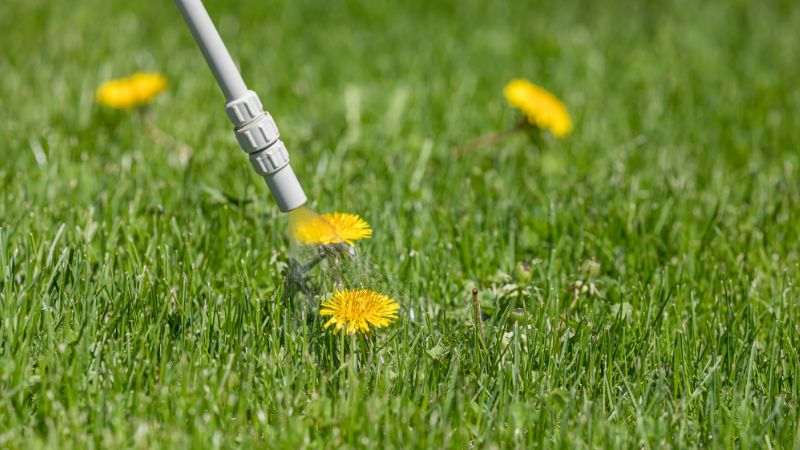
Conclusion: When to Weed and Feed Your Lawn
In summary, it’s important to understand how to use weed and feed on your lawn to keep it green and healthy. Products like Scotts Turf Builder combine fertilization and weed control, making it easier to maintain your lawn.
By knowing what your lawn needs, recognizing types of grass, and being familiar with weeds, you can customize your approach for the best results.
Timing matters. Cool-season grasses do well in spring and fall, while warm-season varieties thrive from spring to summer.
Proper application methods like using a spreader for distribution considering weather conditions and monitoring after application are crucial for weed control and nutrient absorption.
By integrating these techniques into your lawn care routine, you can have a lawn full of weeds all year round.
Frequently asked questions
Why Your Lawn Is Growing At Different Rates?
Does Cutting Grass Make It Grow Faster?
What is the Best Way to Mow a Lawn?
Get tips & tricks on how to grow a profitable lawn care business delivered to you inbox every week.
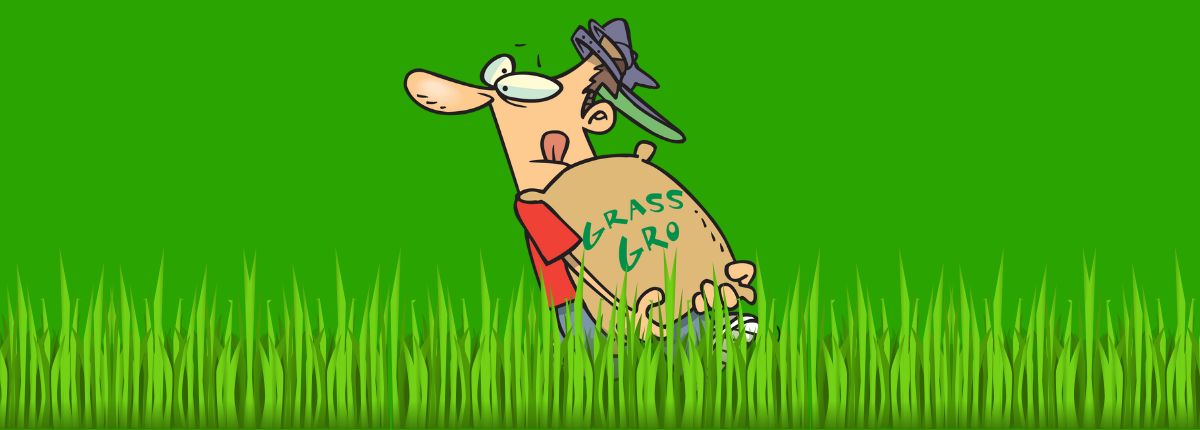
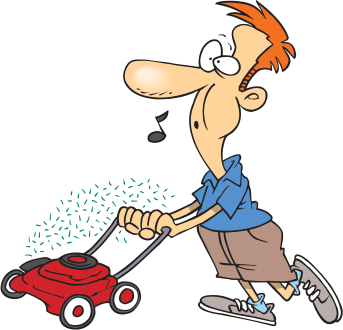
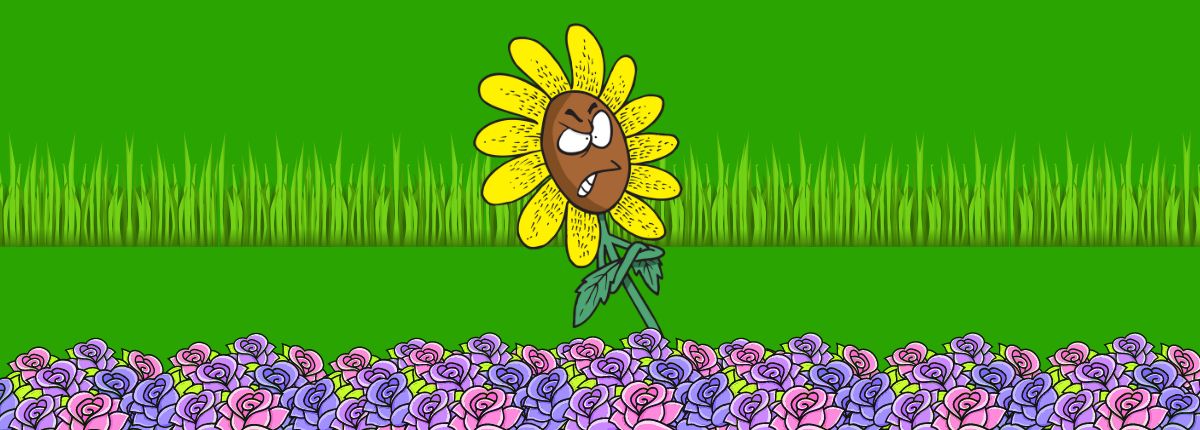
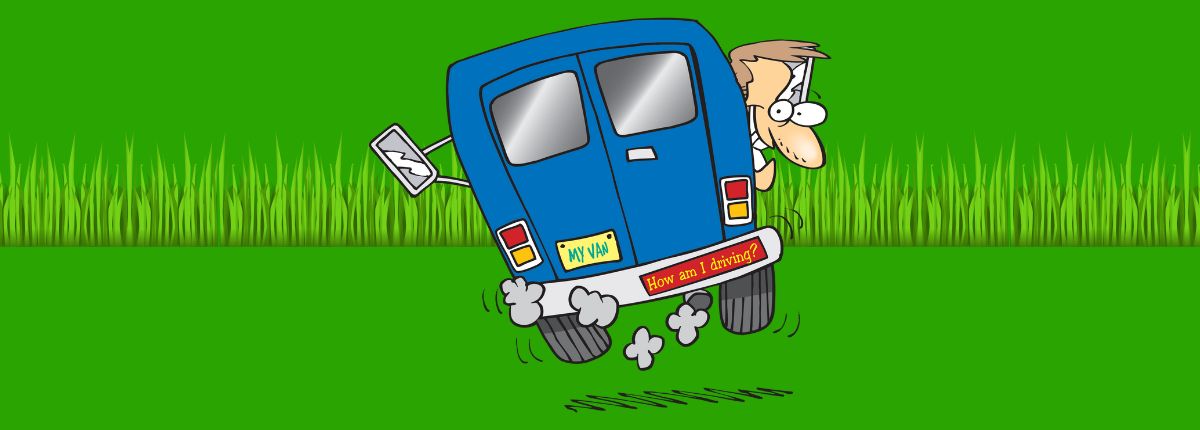


Leave a Reply